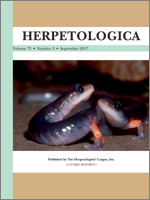From the time of Cope's first analysis of plethodontid systematics through Dunn's era of consolidation and integration to the present time, there have been persistent themes. Criteria for recognition of species continue to evolve as methods of data acquisition have progressed and new methods of analysis of data have been developed. Species descriptions continue, often based on new discoveries, even in well-studied areas, but taxon subdivision is more common. What do we, as a community, want our species to be? Understanding of phylogenetic relationships has advanced with voluminous new molecular data; for example, we know that desmognathines are not the sister-group of all other plethodontids and that the two great clades, plethodonines and hemidactyliines, are well supported. As we have added more data, however, resolution within Hemidactyliinae has dramatically improved while, ironically, resolution within Plethodontinae has decayed. Historical biogeographical thinking has changed dramatically; “Out of Appalachia!” has been replaced with “Into Appalachia?” Biogeography of tropical salamanders has advanced, and we recognize Mesoamerica as a major evolutionary arena. The dominant biogeographic mystery is, why are there so few Old World plethodontids, given that they have been there for so long and occur at opposite ends of Eurasia? Abundant challenges persist for students of plethodontids, offering opportunities for discovery and further research.
How to translate text using browser tools
1 September 2017
Persistent Plethodontid Themes: Species, Phylogenies, and Biogeography
David B. Wake
ACCESS THE FULL ARTICLE

Herpetologica
Vol. 73 • No. 3
September 2017
Vol. 73 • No. 3
September 2017
biogeography
phylogeny
Plethodontidae
salamanders
Species criteria
species recognition




